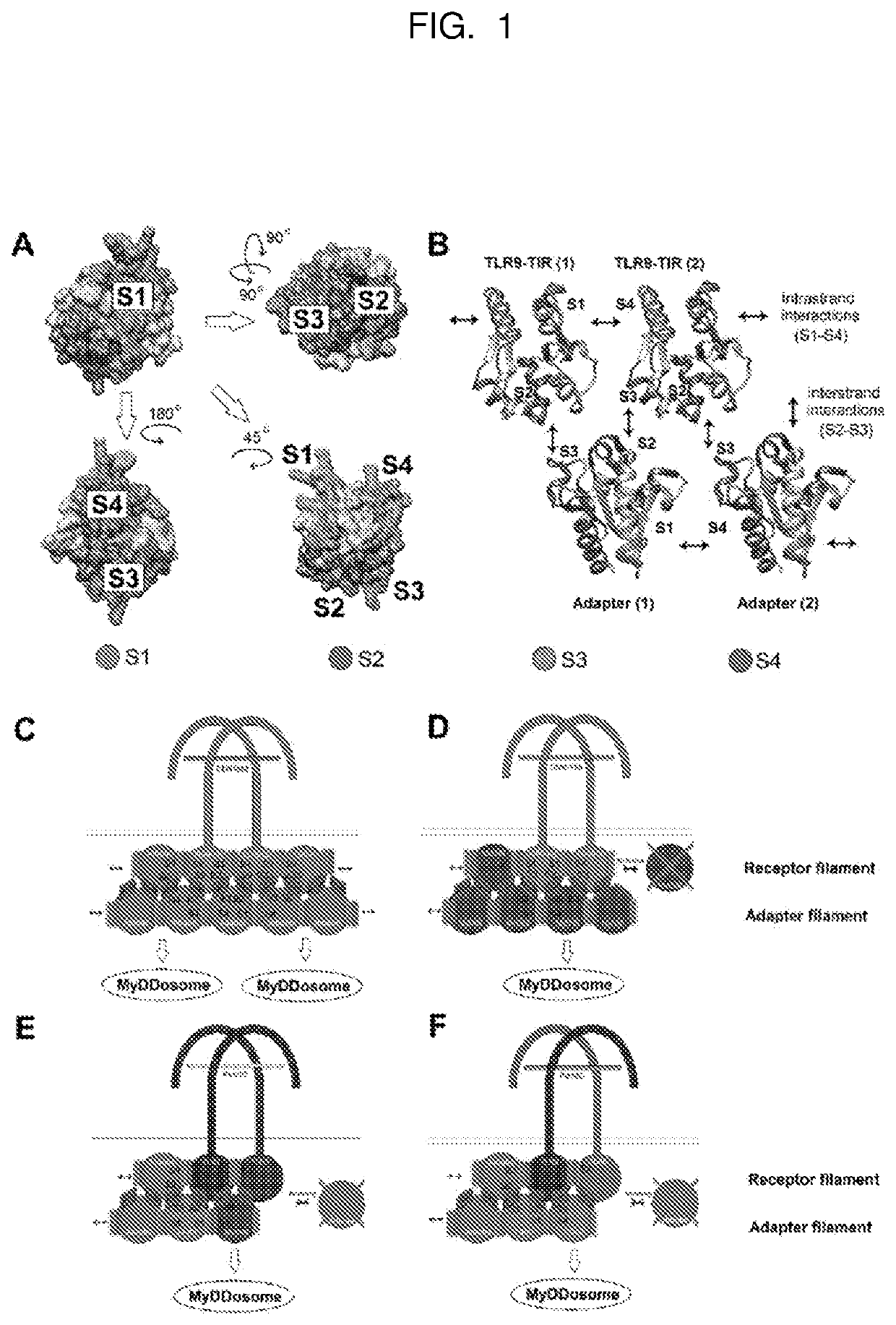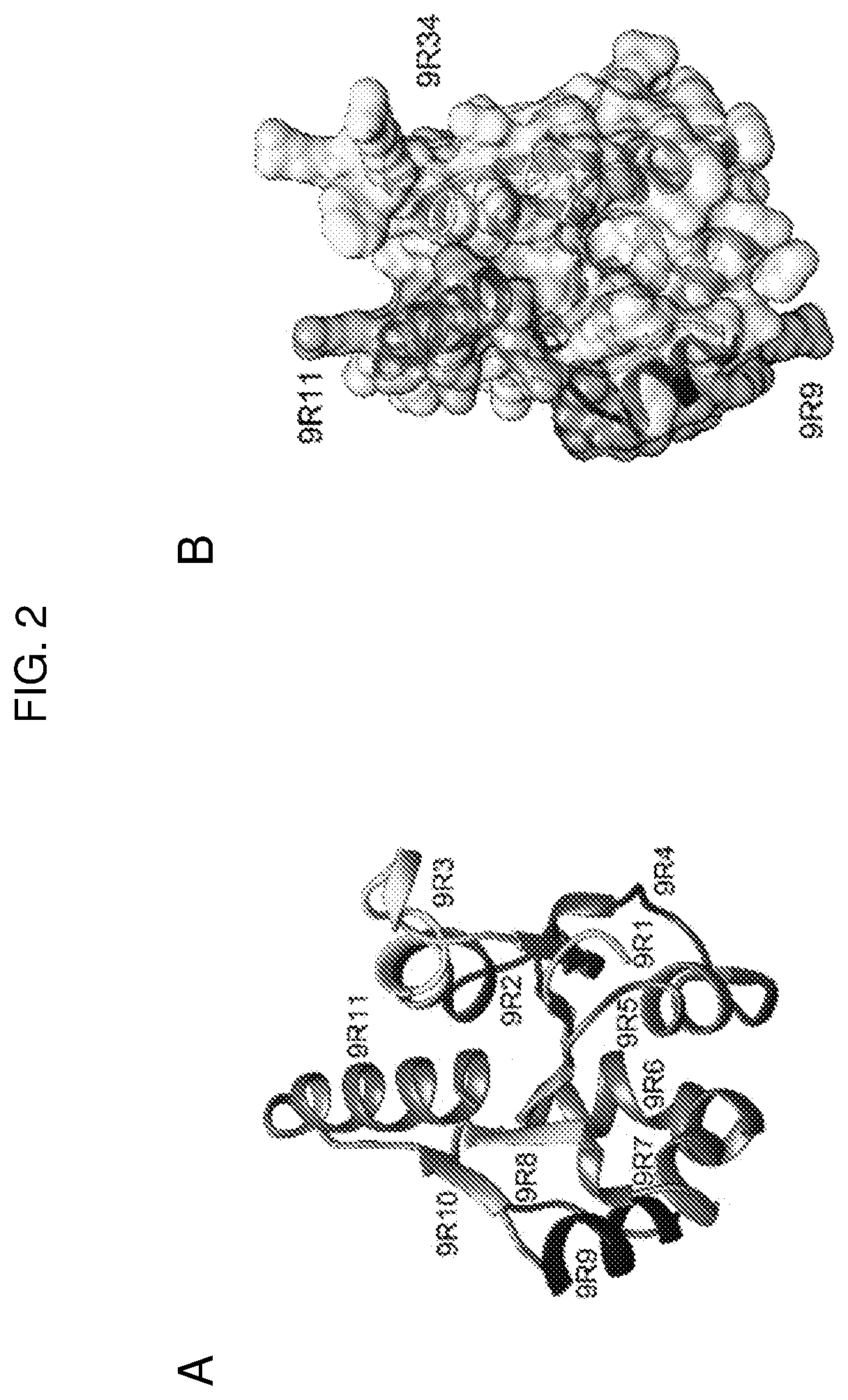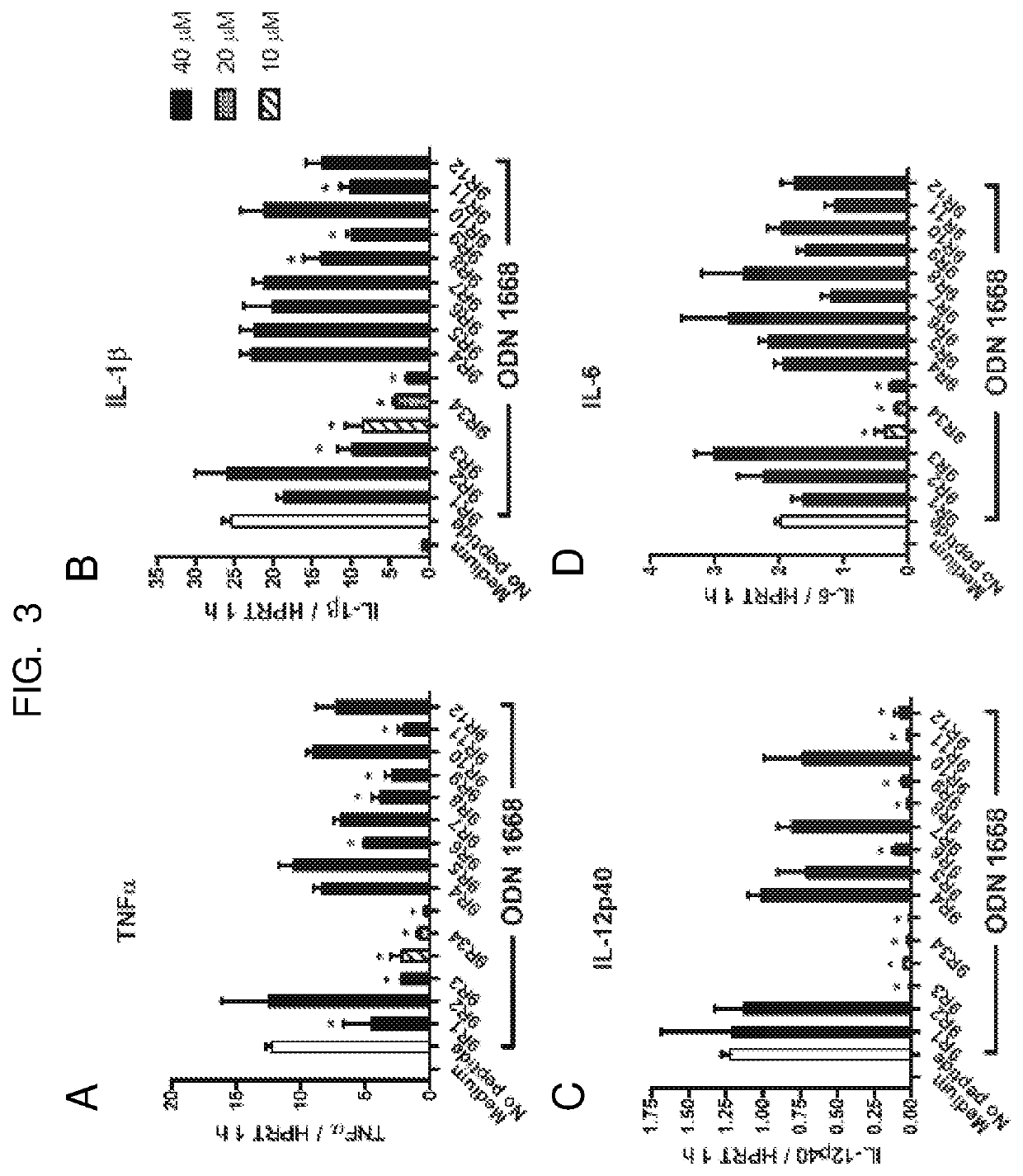Tlr9 inhibitors to suppress inflammatory response to pathogens
- Summary
- Abstract
- Description
- Claims
- Application Information
AI Technical Summary
Benefits of technology
Problems solved by technology
Method used
Image
Examples
example 1
ethods
[0114]1. Animals and Cells
[0115]Eight week old female C57BL / 6J mice were obtained from the Jackson Laboratory™ (Bar Harbor, Me.). Bone marrow-derived macrophages (BMDM) were isolated and cultivated according to known methods (see Weischenfeldt and Porse, 2008). Mouse tibias and femurs were flushed with the ice-cold PBS and the cells obtained transferred to RPMI 1640 supplemented with 10% L929 cell supernatant. The cells were cultured for 10-14 days prior to experiments.
[0116]2. TLR Agonists
[0117]ODN 1668, S-(2,3-bis (palmitoyloxy)-(2R, 2S)-propyl)-N-palmitoyl-(R)-Cys-Ser-Lys4-OH (Pam3C), and R848 were purchased from InvivoGen™ (San Diego, Calif.). Phenol purified, Escherichia coli K235 LPS (65) was a kind gift of Dr. Stefanie N. Vogel (UMB SOM).
[0118]3. Peptide Design, Synthesis, and Reconstitution
[0119]TLR9 sequence TIR domain fragments were synthesized in tandem with the cell-permeating antennapedia homeodomain sequence (RQIKIWFQNRRMKWKK; SEQ ID NO:1), placed at the N-termin...
example 2
f TLR9-Derived CPDP on ODN 1668-Induced Cytokine Expression and Secretion
[0139]In order to investigate and identify TLR9-derived cell-permeable decoy peptides (CPDP) that inhibit TLR9 signaling, the following studies were done. Mouse BMDMs were incubated in the presence of a 10, 20 or 40 μM decoy peptide for 30 minutes prior to stimulation with ODN 1668 (1 μM). FIG. 4 shows cytokine mRNA expression measured 1 hour after ODN 1668 challenge and normalized to the expression of hypoxanthine phosphoribosyltransferase (HPRT). Peptides 9R3, 9R34, 9R9, and 9R11 significantly suppressed TNFα, IL-1β, and IL-12-p40 mRNA expression measured 1 hour after stimulation, whereas effect on IL-6 mRNA expression was statistically significant only for 9R34. Peptides 9R6 and 9R8 also demonstrated some inhibitory activity, but were overall less potent. Data represent the means±SEM of at least three independent experiments. The statistical significance of changes in cytokine mRNA was determined by a one-wa...
example 3
ty of TLR Inhibition by TLR9-Derived CPDP
[0144]CPDPs 9R34 and 9R11 were examined for inhibition of TLR1 / 2, TLR4, and TLR7 signaling. BMDMs were stimulated with Pam3C, E. coli LPS, or R848 and TNFα mRNA was measured 1 hour after stimulation. Mouse BMDM were treated with 40 μM of the indicated peptides for 30 minutes prior to stimulation with ODN 1668 (1 μM), E. coli LPS (0.1 μg / mL), R848 (2.85 μM), or P3C (0.33 μM). R848 and P3C were used to specifically activate TLR7 and TLR2 signaling, respectively. TNFα mRNA expression was measured 1 h after ODN 1668 challenge and normalized to the expression of HPRT. See results in FIG. 8A, FIG. 8B, and FIG. 8C. TLR9 inhibitory peptides did not inhibit signaling induced by TLR1 / 2 or TLR7 agonist. Peptide treatment reduced the TNFα mRNA expression in LPS-stimulated cells by ˜50-70% (see FIG. 8). This level of inhibition of the LPS-stimulated expression was significantly less than that of the ODN-stimulated expression, in which case more than 99% o...
PUM
| Property | Measurement | Unit |
|---|---|---|
| Composition | aaaaa | aaaaa |
Abstract
Description
Claims
Application Information
 Login to View More
Login to View More - R&D
- Intellectual Property
- Life Sciences
- Materials
- Tech Scout
- Unparalleled Data Quality
- Higher Quality Content
- 60% Fewer Hallucinations
Browse by: Latest US Patents, China's latest patents, Technical Efficacy Thesaurus, Application Domain, Technology Topic, Popular Technical Reports.
© 2025 PatSnap. All rights reserved.Legal|Privacy policy|Modern Slavery Act Transparency Statement|Sitemap|About US| Contact US: help@patsnap.com



